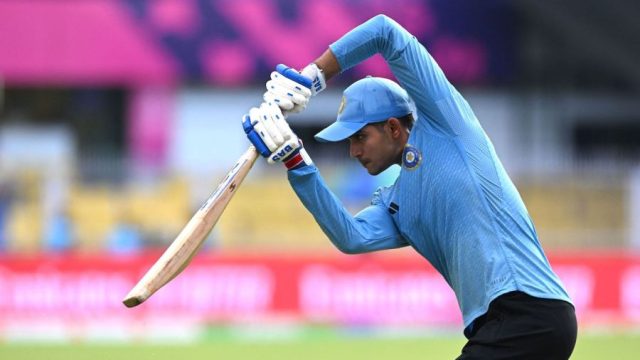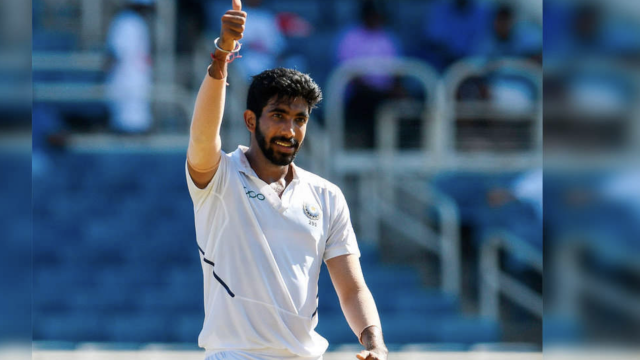How Cricket Scoring Works

Cricket is an exciting and complex sport that requires a great deal of skill from players and an understanding of the rules from spectators. An important part of the game is understanding how cricket scoring works. Knowing the cricket scoring system is key to understanding the game, as it provides an insight into the tactics and strategies employed by players. Cricket scoring is based on a system of runs and wickets, and there are a number of different scoring formats that can be used. This article will explain the basics of cricket scoring and provide an overview of the different scoring formats that can be used. With a better understanding of cricket scoring, you’ll be able to follow the game more closely and enjoy it even more.
What is cricket scoring?
Cricket scoring is the process by which the runs, wickets, and dismissals of a cricket game are recorded. Scoring is an essential part of the game for a couple of reasons. Firstly, it provides a means for spectators to follow the game more closely and understand the match. Secondly, it allows the match details to be reported accurately. This allows cricket statistics to be analyzed, which can be useful in a variety of ways. Some examples of cricket statistics include bowling averages, batting averages, and bowling strike rates. A third reason that scoring cricket is important is that it helps to determine the result of a match. This is because in order for a team to win, they need to have a higher run total than the opposition team. If the match ends in a tie, then a result can be determined through the use of a cricket tiebreaker.
Types of cricket scoring
There are a number of different cricket scoring formats that can be used. The two most common scoring formats are the traditional format and the modern format. In the traditional format, the team with the highest total when the match ends is the winner. This can be done by either adding the total number of runs scored by both teams together or alternatively by adding the number of wickets lost by both teams together to determine the winning team. In the modern format, the team with the highest run rate is the winner. A run rate is calculated by dividing the total number of runs scored by the total number of overs bowled. A third scoring format is called the Super Over format. This is used when the traditional format or the modern format cannot be used to determine the result. This is usually because the match has ended in a tie. In the Super Over format, the team with the highest total after six overs is declared the winner.
How to score runs in cricket
A run is scored when the batsmen run between the wickets. A run can be scored in a number of different ways and with a variety of different scores. The most common way to score a run is when a batsman hits the ball away from the field and completes a run to the other end without being dismissed. This is called scoring off the bat. The batsman can score one run for hitting the ball between the wickets on the leg side of the pitch and two runs for hitting the ball between the wickets on the off side of the pitch. The batsman can also score runs when they hit the ball over the boundary. There are a number of different ways to score a boundary. The most common way is to hit the ball over the boundary on the off side of the pitch. The batsman can also score boundaries by hitting the ball over the boundary on the leg side of the pitch and hitting the ball over the boundary on the top side of the pitch.
How to score wickets in cricket
A wicket is the term used to describe when a batsman is dismissed. There are a number of different ways for a batsman to be dismissed. Batsman can be dismissed caught, bowled, leg before wicket, run out, stumped, and handled the ball. The terms caught, bowled, leg before wicket are all called types of dismissal. These are the three most common ways for a batsman to be dismissed. To record the number of wickets taken by the bowlers, a number of symbols are used. A dot is used to indicate one wicket, a cross is used to indicate two wickets, and an X is used to indicate three wickets.
Different cricket scoring formats
There are a number of different cricket scoring formats that can be used. The two most common scoring formats are the traditional format and the modern format. In the traditional format, the team with the highest total when the match ends is the winner. This can be done by either adding the total number of runs scored by both teams together or alternatively by adding the number of wickets lost by both teams together to determine the winning team. In the modern format, the team with the highest run rate is the winner. A run rate is calculated by dividing the total number of runs scored by the total number of overs bowled. A third scoring format is called the Super Over format. This is used when the traditional format or the modern format cannot be used to determine the result. This is usually because the match has ended in a tie. In the Super Over format, the team with the highest total after six overs is declared the winner.
Tied matches in cricket
If the match ends in a tie, a result can be determined through the use of a cricket tiebreaker. There are a number of different tiebreakers that can be used depending on the format of the match. In limited overs cricket, an extra over can be bowled by each team; the team with the highest run rate after the over is the winner. In Twenty20 cricket, the match can be extended and played over two innings. The team with the highest total in both innings combined is the winner.
Scoring in limited overs cricket
When scoring in limited overs cricket, the important thing to remember is that each team has a set number of overs they can bowl. The team with the higher total when all the overs are up wins the game. One important thing to remember is that in limited overs cricket the bowler cannot take wickets. Once the set number of overs is up for a bowler, they go off and another bowler comes on. So, if a team is bowling and they get a batsman out, that batsman goes off and the next batsman comes on to face the next over. In limited overs cricket, the run rate is a very important aspect for the team. They need to bowl well and take wickets to keep the run rate down and have the batsmen trying to score as quickly as possible.
Scoring in Twenty20 cricket
When scoring in Twenty20 cricket, the important thing to remember is that each team has a set number of overs they can bowl. The team with the higher total when all the overs are up wins the game. One important thing to remember is that in Twenty20 cricket the bowler cannot take wickets. Once the set number of overs is up for a bowler, they go off and another bowler comes on. So, if a team is bowling and they get a batsman out, that batsman goes off and the next batsman comes on to face the next over. In Twenty20 cricket, the run rate is a very important aspect for the team. They need to bowl well and take wickets to keep the run rate down and have the batsmen trying to score as quickly as possible.
Strategies for successful cricket scoring
There are a number of ways you can improve your cricket scoring. First, make sure you have the correct cricket scoring tools to do the job. Secondly, practice scoring cricket matches to improve your skills. This can be done by either attending games at the stadium or watching games on TV. Finally, take note of the strategies used by the batsmen and bowlers. This will help you to better understand the game and improve your cricket scoring by having a greater appreciation for the game.
Cricket scoring tools and software
Cricket scoring tools can be useful for keeping score, especially for those who are new to the game. By using cricket scoring tools, you can be more accurate and efficient with your scoring. There are also cricket scoring apps available for mobile devices, which can be useful for those who enjoy following the game on the go.
You may also like: What is strike rate in cricket?
How Cricket Scoring Works – FAQs
What is the basic scoring system in cricket?
In cricket, runs are scored by hitting the ball and running back and forth between the two sets of wickets. The team that scores the most runs wins the match.
How is a run scored in cricket?
A run is scored in cricket when the batting team successfully hits the ball and runs to the other end of the pitch, crossing each other’s positions. A run can also be scored as a penalty, when the fielding team commits a no-ball or a wide ball.
How many players are on a cricket team?
A cricket team typically has 11 players.
How many innings are played in a cricket match?
In a traditional cricket match, known as a test match, each team has the opportunity to bat twice (known as innings).
How many overs are in an innings?
The number of overs in an innings can vary depending on the format of the match. In a standard One Day International match, each team has 50 overs to score as many runs as possible. In a Twenty20 match, each team has 20 overs to score.
How is the score kept in cricket?
The score in cricket is kept by two scorers, one for each team. They keep track of the runs scored, the number of overs bowled, and any other relevant information.
Can a cricket match end in a tie?
A cricket match can end in a tie if both teams score the same number of runs. In some formats, a Super Over is used to determine the winner.
What is the role of the umpire in cricket?
Umpires are responsible for making decisions on the field, such as whether a ball is a fair delivery or whether a batsman is out. They also keep track of the score, signal the start and end of an over, and enforce the rules of the game.
What is a “wicket” in cricket?
A wicket is made up of three stumps (vertical wooden posts) and two bails (small horizontal pieces of wood). The wicket is the target for the bowler and the defense for the batsman. A “wicket” is also the term used when a batsman is dismissed, either by being bowled, caught, run out, stumped, or hit wicket.





